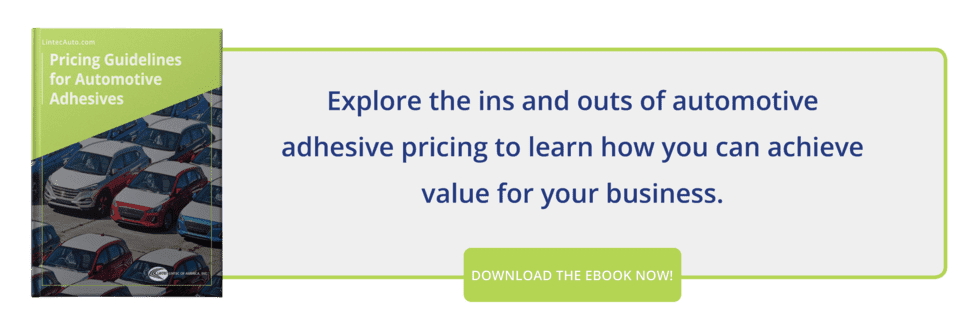To purchase the best automotive double-sided tape, you’ve got to investigate the qualities of both the product and the supplier. The answers to these five questions will give you a sense of whether you’ve found the ideal solution for your needs:
1. What are my options for adhesive/core layers?
This is worth asking even if you have a particular option in mind before the conversation begins. Why? A supplier with limited available options will have less flexibility if you need to make changes later on, less expertise to show you attractive alternatives, and may require you to find suppliers for your other adhesive needs (bloating—rather than consolidating—your supplier portfolio). You know you’re in good hands when a supplier of double-sided automotive tape has an extensive catalog of available adhesives.
2. Are you able to customize each side for unlike substrates?
This is the differentiating advantage of double-sided automotive tape when compared to liquid adhesives. With a film core separating two adhesive layers, you have the opportunity to cater each adhesive to the needs of unique substrates.
Vehicles today are rife with unlike materials that must bond together—plastic, composite, steel, aluminum, glass, and more. Double-sided tape for car emblems is a perfect example of a use case that often needs two unique adhesive layers. One side may need an aggressive, high-tack adhesive to wet out an LSE plastic surface, while the other side uses an adhesive better-suited to HSE steel or chrome.
A supplier with a wide array of combinations for their double-sided automotive tape will better serve your needs in the long run.
3. Can I count on you to meet my production volume?
Sometimes an aggressive, high-volume shipment cadence will rule out smaller suppliers who are ill-equipped to handle the large orders. A low-volume, limited run may also be unattractive to suppliers who are looking for more consistent business. But even a very moderate order could challenge the average supplier due to niche, hard-to-fulfill adhesive design specs.
Failure to make a shipment means costly delays at the least, and trouble with your down-stream partnerships or customer satisfaction at the worst. Make your needs very clear upfront, and ensure the supplier has full confidence in their ability to meet your production volume with reliable shipments (and guarantees in the contract).
4. How do you handle adhesion to LSE plastics?
Low surface energy thermoplastics present several design problems for your adhesives. First, of course, they’re difficult to wet-out and securely bond. Additionally, these thermoplastics have a tendency to out-gas over time. The release of these gasses will create bubbles or blisters that can interrupt the substrate’s contact with your automotive double-sided tape and further weaken the already-difficult bond.
If you’re seeking LSE-friendly double-sided adhesive tape for cars, you’ll want to know how the supplier’s adhesives handle unique problems like these. Ask for the details of how their adhesives create strong bonds with LSE surfaces, and also how the LSE adhesives perform with challenges like:
- High variance in temperatures
- Differing thermal expansion properties of each substrate
- Out-gassing
- Curvatures
- Narrow bonds
- Rough surfaces
- Shearing forces
5. Will the end-value of your tape improve over my previous solution?
You may be on the market for an upgrade over a previous contract for double-sided automotive tape. Or perhaps you’ve been using liquid adhesives or mechanical fasteners, and are comparing them with newer automotive adhesive options.
Either way, it takes more than a lower price-per-unit to truly make your purchase an upgrade in total value. Remember to include delivery distance, service quality, shipping costs, and other hidden expenses in your end-value calculation.
The best automotive double-sided tape solution will offer added value in the form of:
- Lightweighting (compared to mechanical fasteners)
- Accelerated line times (over long-curing liquids or bolts/screws that require individual drilling and fastening)
- Increased service life (fewer punctures that result in rust/corrosion, longer-lasting bonds than screws that loosen over time)
The goal is for the double-sided automotive tape to reduce the cost of your current process, while also resulting in better performance.

